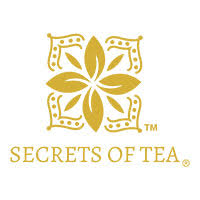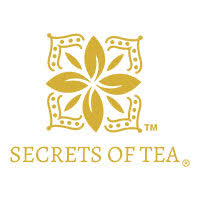6 Breastfeeding Tips Every New Mom Should Know
Introduction
Breastfeeding is a beautiful and natural way to nourish your baby while creating a special bond. As a new mom, you may have questions and concerns about breastfeeding, and that's perfectly normal. In this comprehensive guide, we will share six breastfeeding secrets that every new mom should know. From establishing a proper latch to managing milk supply, we've got you covered. Let's dive in!
1. The Importance of a Good Latch
One of the most crucial aspects of successful breastfeeding is ensuring a good latch. A good latch allows your baby to effectively extract milk from your breast while minimizing discomfort for both of you. To achieve a good latch, follow these steps:
- Position your baby facing your breast, with their mouth in line with your nipple.
- Wait for your baby to open their mouth wide.
- Bring your baby close to your breast, aiming their lower lip below your nipple.
- Help your baby latch by supporting their neck and shoulders.
- Ensure your baby's mouth covers a significant portion of your areola, not just the nipple.
A proper latch promotes efficient milk transfer, reduces the risk of nipple pain or damage, and helps stimulate milk production.
2. Establishing a Breastfeeding Routine
Creating a consistent breastfeeding routine can be beneficial for both you and your baby. By following a regular schedule, your body will learn to anticipate your baby's needs, and your baby will feel secure and comforted by the predictability. Here are some tips to establish a breastfeeding routine:
- Feed your baby on demand, as newborns have irregular feeding patterns.
- Offer your breast whenever your baby shows hunger cues, such as rooting or sucking on their hands.
- Aim for at least 8 to 12 nursing sessions per day during the first few weeks.
- As your baby grows, spacing out feedings to every 2 to 3 hours can help establish a more predictable routine.
Remember, every baby is unique, and it's essential to listen to their cues and adapt your routine accordingly.
3. Proper Breast Care and Hygiene
Maintaining proper breast care and hygiene is crucial for preventing discomfort and reducing the risk of infections. Follow these guidelines to keep your breasts healthy:
- Wash your breasts with warm water daily, avoiding harsh soaps that can dry out your skin.
- Wear breathable nursing bras and avoid tight-fitting clothing that can restrict milk flow.
- Change breast pads frequently to keep your breasts dry and prevent bacterial growth.
- If you experience sore or cracked nipples, apply lanolin cream or breast milk to soothe and promote healing.
- Practice good hand hygiene before each feeding session to minimize the risk of infection.
By prioritizing breast care and hygiene, you can ensure a comfortable and healthy breastfeeding experience.
4. Boosting Milk Supply Naturally
Many new moms worry about their milk supply, but there are several natural ways to boost and maintain a healthy milk production. Consider these strategies to optimize your milk supply:
- Nurse frequently: The more you nurse, the more milk your body will produce. Aim for 8 to 12 nursing sessions per day.
- Practice breast compression: During a feeding session, gently compress your breast to encourage milk flow and stimulate milk glands.
- Stay hydrated: Drink plenty of water throughout the day to support optimal milk production.
- Eat a balanced diet: Include foods rich in galactagogues, such as oats, fenugreek, and fennel, known to enhance milk supply. Here's few Lactation recipes to boost your milk supply.
- Get enough rest: Fatigue can negatively impact milk production, so prioritize self-care and rest whenever possible.
Remember, it's normal for milk supply to adjust to your baby's needs, so trust your body's ability to provide for your little one.
5. Overcoming Common Breastfeeding Challenges
Breastfeeding can sometimes present challenges, but with the right knowledge and support, you can overcome them. Here are a few common breastfeeding challenges and their solutions:
Engorgement
Engorgement occurs when your breasts become overly full and swollen. To relieve engorgement, try:
- Applying warm compresses to your breasts before feeding.
- Using cold packs or cabbage leaves after nursing to reduce swelling.
- Expressing a small amount of milk by hand or with a breast pump to soften the breast before latching your baby.
Sore Nipples
Sore nipples are a common concern, especially during the early days of breastfeeding. To alleviate soreness:
- Ensure a proper latch to prevent nipple damage.
- Apply lanolin cream or breast milk to soothe and moisturize the nipples.
- Change breastfeeding positions to minimize pressure on sore areas.
Clogged Milk Ducts
A clogged milk duct can cause localized pain and a lump in the breast. To clear a clogged duct:
- Apply warm compresses and gently massage the affected area.
- Nurse frequently on the affected side to encourage milk flow.
- Ensure proper drainage by starting each feeding on the affected breast.
Remember, seeking guidance from a lactation consultant or healthcare provider can be immensely helpful in addressing any breastfeeding challenges you may encounter.
6. The Power of Support
Last but certainly not least, remember that you don't have to navigate your breastfeeding journey alone. Seeking support from loved ones, friends, and breastfeeding support groups can make a significant difference. Here are a few avenues to explore:
- Join local breastfeeding support groups or online communities where you can connect with other moms facing similar challenges.
- Consult with a lactation consultant for personalized guidance and troubleshooting.
- Share your concerns and experiences with your partner, as their support is invaluable.
Breastfeeding is a learned skill, and it takes time and practice to become comfortable. Surrounding yourself with a supportive network will provide encouragement and reassurance along the way.
Healthy Nursing Lactation Tea
Healthy Nursing Lactation Tea from Secrets of Tea is a remarkable herbal blend designed to support breastfeeding mothers. This tea is thoughtfully crafted using all-natural ingredients known for their lactogenic properties, including fenugreek, fennel, anise, and blessed thistle. It is carefully formulated to enhance milk production and supply, providing the essential nutrients needed to nourish both mother and baby. The tea's soothing and calming properties also aid in digestion and alleviate common breastfeeding discomforts. With its delightful taste and numerous benefits, Healthy Nursing Lactation Tea from Secrets of Tea is a perfect companion for any nursing mother on her breastfeeding journey.
Click [here] to order directly from the website.
Conclusion
Breastfeeding is a remarkable experience that nourishes your baby while strengthening the bond between you. By understanding the importance of a good latch, establishing a routine, maintaining breast care, boosting milk supply naturally, overcoming common challenges, and seeking support, you're well-equipped to embark on this beautiful journey of motherhood. Remember to be patient with yourself and your baby as you navigate the intricacies of breastfeeding. Trust your instincts, and embrace the incredible gift you're giving to your little one.
Frequently Asked Questions (FAQs)
1. How long should I breastfeed my baby?
The American Academy of Pediatrics (AAP) recommends exclusive breastfeeding for the first six months of your baby's life, followed by continued breastfeeding alongside the introduction of solid foods until at least 12 months. However, the decision to continue breastfeeding beyond a year is a personal one and can be based on your and your baby's needs and preferences.
2. How often should I breastfeed my baby?
Newborns typically need to breastfeed frequently, about 8 to 12 times in a 24-hour period. As your baby grows, their feeding pattern may become more predictable, and you can gradually space out the feedings to every 2 to 3 hours. Remember, though, that each baby is unique, and it's essential to feed on demand and listen to your baby's hunger cues.
3. Can I breastfeed if I have inverted or flat nipples?
Yes, most women with inverted or flat nipples can breastfeed successfully. Working with a lactation consultant can be beneficial in learning techniques to help your baby latch onto your breast effectively. Additionally, using nipple shields or breast shells may offer assistance in establishing a good latch and promoting milk flow.
4. Can I breastfeed if I have a low milk supply?
Having a low milk supply is a common concern among new moms. In most cases, with proper breastfeeding techniques and frequent nursing, your milk supply will be sufficient for your baby's needs. It's essential to nurse on demand and ensure a proper latch to stimulate milk production.
5. How do I wean my baby from breastfeeding?
Weaning is a gradual process that can be initiated when both you and your baby are ready. You can begin by replacing one breastfeeding session with a bottle or cup of expressed milk or formula. Slowly, over time, you can gradually reduce the number of breastfeeding sessions while offering other sources of nourishment. It's important to wean at a pace that is comfortable for both you and your baby, and to provide emotional support during this transition.








اترك تعليقا